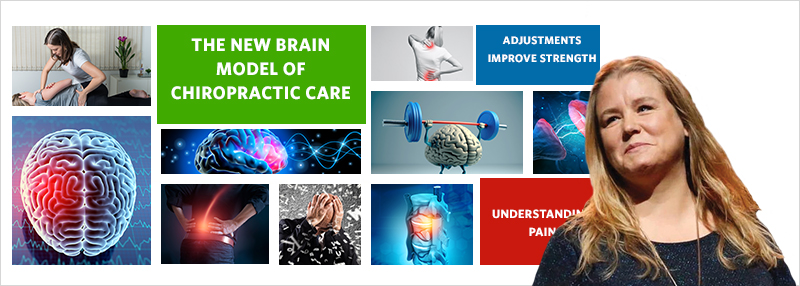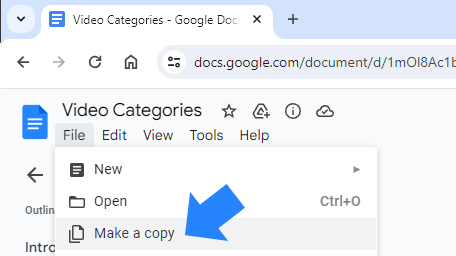
Heidi Haavik’s Online Course
Welcome to this online course to Improve Performance, Strength and Function with Chiropractic Communication.

This online course provides practical knowledge about the latest information about the importance of good spinal function. This should help you answer common questions from your practice members (patients). This course is also designed to help you take advantage of several online resources your chiropractor’s practice has access to, which will help enlighten your practice members about the many scientifically proven benefits of chiropractic care.
Thank you for accepting this challenge. We hope you enjoy this course and would love to hear how you go. At any time, please feel free to email us at support@chiroshub.com.
Step 2
Over the following weeks, you will be able to work through the online classes below, with practical multiple-choice questions to ensure you are taking away the critical information. Make sure that you can log in and access the content. If you are having trouble logging in, don’t hesitate to contact support@chiroshub.com.
This class will give you an in-depth understanding of the first visit to a chiropractor and why people seek chiropractic care. It will explain that chiropractic care is about more than just helping people with neck and back pain by understanding how chiropractic care works and how it influences the nervous system.
Learning Outcomes
- Explain the basics of chiropractic, how it works, and what happens on the first visit to a chiropractor.
- Explain what happens during joint cavitation and the ‘popping’ sound.
Step 3
This class will give you an in-depth understanding of chiropractic adjustment. You will learn about the brain, how the brain perceives the world, and what can occur when this perception of the world is inaccurate. This class will discuss the mechanisms of chiropractic adjustments and how they affect the brain so that you can easily explain to someone how an adjustment works.
Learning Outcomes
- Explain the importance of the brain and accurate communication between the brain and body.
- Explain a chiropractic adjustment, how it works, and what to expect for the first adjustment.
Step 4
Assignment 1 – Using the Animations
Assignment 1 – Part 1 of 2
Show at least one patient one of these videos on your practice screen, iPad, smartphone or email them.

Get feedback from at least one patient on whether or not this information is useful to them and complete the form below:
Assignment 1 – Part 2 of 2
Look at all the video animation titles available so you have an idea of what’s there. Familiarise yourself with the animations on Chiros Hub in the various categories.
Download and complete the Video Categories Document (below) and enter key words and/or phrases about the content of that video, and, enter in the patient questions that each one of the videos can answer. See example below:

If you are using the Google Doc, make sure to select File > Make a Copy to get full edit access to the document.

Email to support@chiroshub.com
Step 6
This class will give you an in-depth understanding of stress and how it affects our health. We will discuss different types of stress and how stress can affect our physical and mental health. This class covers how stress affects our brain. We will talk about symptoms, what they can mean and how chiropractic care addresses the cause of the symptoms rather than the symptoms themselves.
Learning Outcomes
- Explain how stress affects our health
- Summarise the evidence regarding chiropractic care and heart rate variability
Step 7
This class covers the overall function of the brain and the spine and how spinal function can impact brain function. We will discuss spinal dysfunction and the mechanisms of how this affects the brain. We will also cover chiropractic research demonstrating how spinal function and adjustments can affect the brain in various ways.
Learning Outcomes
- The relationship between the brain and spine.
- The research regarding chiropractic care and the impact on brain and spinal function.
Step 8
People must understand that chiropractic can have many benefits and how it affects the brain and nervous system. Specifically, this class covers what we know about the effects of chiropractic care on muscle strength. It will discuss the basics of muscle contraction and how the brain controls muscle force.
Learning Outcomes
- Understand the basics of muscle contraction and force production
- Summarize the evidence that shows that chiropractic adjustments improve muscle strength and prevent fatigue
Step 9
Assignment 2 – Using the Research
Ensure you print out several chiropractic research summary articles from https://chiroshub.com/research/ or using the download list below. Choose one you like, and leave it around your Office for the next few weeks. Also, send out your first email with this information, plus the PDF as an attachment to your entire email list – and collect the feedback and/or questions for us to discuss at the next Zoom Workshop.
Research Summary Article Download Links
Secrets of the Spine
Understanding Pain
Step 10
This class, ‘Communicating Chiropractic Science,’ covers why sharing the science of chiropractic is important. The public is getting smarter about asking for proof of information, which is great. Knowing what chiropractic science has been done and how good it is is important. Poorly done research studies are meaningless, so you should only share research studies of decent quality.
Learning Outcomes
- Summarize why communicating chiropractic science is important
Step 11
Practical Workshop
Heidi will explain what’s required for this week during the Zoom class preceding it.
Over the next 20 minutes, try to agree on answers to the following seven typical patient questions individually or in small groups of two or three.
Hint: Keep the language simple and easy to understand but accurate according to science.
- What is a subluxation?
- Why do we get subluxated?
- How do subluxations affect me?
- How would I notice if I was subluxated?
- What happens when you adjust me?
- What are the typical effects of adjustments?
- What is that crunching/popping/cracking sound when you adjust me?
Download and complete the feedback form below and email it to support@chiroshub.com to get the model answers.
Find the Answers
Watch the video animations (if you haven’t already) in the following classes to get the answers:
1.01 – The first visit to a chiropractor
1.02 – The first adjustment
1.03 – Adjustments improve strength
2.03 – Spinal function affects brain function
Step 12 – Zoom Workshop 3
Step 13
Assignment 4 – Workshop Assessment
The exact date and time of the practical group workshop, during which you will practice asking and answering these questions, will be arranged with your Chiropractor before the final live Zoom session with Heidi.
When you have done this final practical assignment, email everyone’s scores to support@chiroshub.com
Once you have the model answers to Assignment 3, set a time to meet with your staff, preferably during August. Before this practical team workshop, let your staff know they can watch any of their online classes again. They can also read the scripts to the relevant animations if that helps.
In pairs over the next 30 minutes, role-play, answering the following seven patient questions that you have found the answers to in Assignment 3.
One can pretend to be the patient, and the other can pretend to be the Chiro Assistant or chiropractor who answers the patient’s questions. The person asking the questions and listening to the answers can also be the assessor of the answers provided by the CA or chiropractor. Rotate so that each of you gets to be in both roles. Use the Marking rubric below and rate the answers. Rate according to accuracy, confidence, and use of analogies in their answers, if possible.
During this practical session, you will get a feel for how well your CAs understand the materials and how comfortable they are answering these questions. Discuss with your staff the model answers. They should not sound scripted, so they should come from them in their own language. This role-play task is essential for your CAs to ‘own’ this material themselves and to be able to answer such questions from patients. It will also help you feel comfortable with the language of the brain model of chiropractic care.






